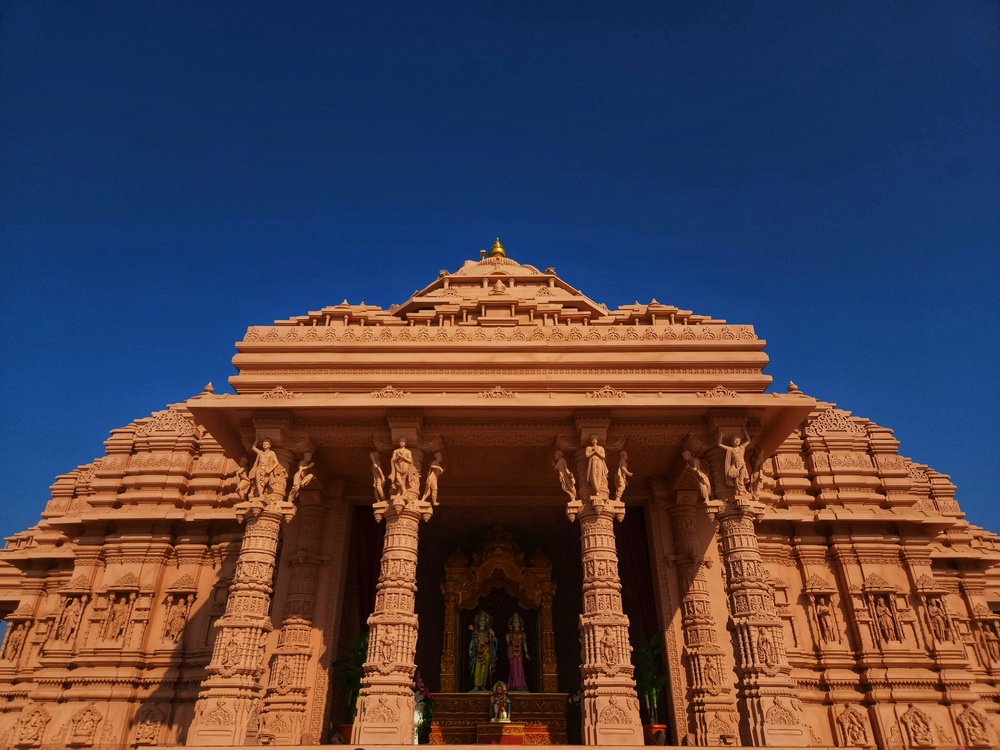Religious Tourism in India: A Spiritual Journey Across the Nation
India, often referred to as the land of spirituality and faith, is home to countless holy places, rituals, and traditions that attract millions of pilgrims and travelers each year. Religious tourism in India is not just about visiting sacred sites—it is about immersing oneself in centuries-old culture, history, and spiritual practices. Whether you are seeking peace, blessings, or simply a deeper understanding of India’s diverse faiths, religious tourism offers a journey like no other.
The Significance of Religious Tourism in India
Religious tourism in India is deeply rooted in the country’s identity. With Hinduism, Islam, Christianity, Sikhism, Buddhism, Jainism, and many other faiths coexisting, India offers a rich spiritual tapestry. Each region has its own set of revered sites, unique festivals, and sacred rituals. From Himalayan temples to coastal churches, from grand mosques to serene monasteries, the variety of experiences is unparalleled.
This form of tourism is not limited to pilgrims alone; many travelers come to witness the beauty of religious architecture, understand local traditions, and take part in age-old ceremonies that have been practiced for centuries.
Major Destinations for Religious Tourism in India
1. Varanasi, Uttar Pradesh
Known as the spiritual capital of India, Varanasi is one of the oldest inhabited cities in the world. Situated on the banks of the Ganga, it is a significant pilgrimage site for Hindus. Visitors can witness the famous Ganga Aarti, take a boat ride during sunrise, and visit the Kashi Vishwanath Temple.
2. Amritsar, Punjab
Home to the Golden Temple (Harmandir Sahib), Amritsar is the most sacred place for Sikhs. The shimmering gold structure surrounded by a serene lake is a sight that leaves travelers in awe. Pilgrims also experience the warmth of the community kitchen (langar) which serves free meals to thousands every day.
3. Bodh Gaya, Bihar
Bodh Gaya holds immense significance for Buddhists, as it is the place where Lord Buddha attained enlightenment under the Bodhi Tree. The Mahabodhi Temple, a UNESCO World Heritage Site, draws both monks and travelers from across the globe.
4. Tirupati, Andhra Pradesh
One of the richest and most visited pilgrimage centers in the world, Tirupati’s Sri Venkateswara Temple sees millions of devotees annually. The temple is known for its elaborate rituals and grand festivals.
5. Rameswaram, Tamil Nadu
Considered one of the Char Dham pilgrimage sites, Rameswaram is a coastal town linked with the Hindu epic Ramayana. The Ramanathaswamy Temple, with its magnificent corridors and sacred wells, is a must-visit.
6. Ajmer Sharif, Rajasthan
Ajmer is famous for the Dargah Sharif of Khwaja Moinuddin Chishti, a Sufi saint. People from all faiths visit this holy site, especially during the Urs festival.
7. Shirdi, Maharashtra
Known as the home of Sai Baba, Shirdi attracts millions of devotees who come to seek blessings and witness the teachings of faith, patience, and compassion.
8. Kedarnath & Badrinath, Uttarakhand
Nestled in the Himalayas, Kedarnath and Badrinath are important Hindu pilgrimage sites. The journey to these temples is as spiritually enriching as the destination itself.
Religious Festivals and Fairs
Religious tourism in India is at its peak during festivals. Diwali, Eid, Christmas, Guru Nanak Jayanti, Holi, Durga Puja, and Buddha Purnima are celebrated with grandeur and devotion. Special religious fairs like the Kumbh Mela (the world’s largest religious gathering) offer a once-in-a-lifetime spiritual experience.
The Blend of Spirituality and Tourism
Religious tourism in India is evolving to blend traditional faith with modern hospitality. Pilgrims now have access to improved travel facilities, guided tours, spiritual retreats, and cultural experiences. Many tour operators offer packages that combine visits to religious sites with local sightseeing, food tours, and cultural performances.
Impact of Religious Tourism on Local Communities
Apart from spiritual fulfillment, religious tourism plays a significant role in supporting local economies. Pilgrims contribute to the livelihood of artisans, shopkeepers, guides, and hospitality providers. It also helps preserve heritage sites and promotes cultural exchange.
Tips for Religious Travelers in India
- Respect local customs: Dress modestly and follow temple, mosque, or monastery etiquette.
- Plan ahead: Many religious sites have seasonal closures or are more accessible at certain times of the year.
- Participate respectfully: If you join a prayer or ritual, observe how locals do it and follow their lead.
- Stay hydrated and healthy: Some pilgrimage sites require long walks or treks, so be prepared physically.
Conclusion
Religious tourism in India is not just a journey of faith—it’s a journey into the heart of the country’s culture and history. Whether you seek divine blessings, wish to understand different religions, or simply want to witness the beauty of sacred traditions, India’s spiritual heritage will leave you inspired.
From the ghats of Varanasi to the snow-clad Kedarnath Temple, from the peaceful monasteries of Ladakh to the vibrant gurdwaras of Punjab, religious tourism in India promises an experience that is as soulful as it is unforgettable.





